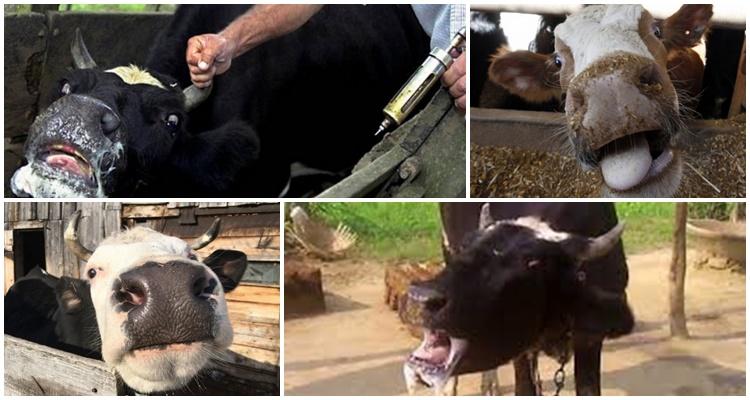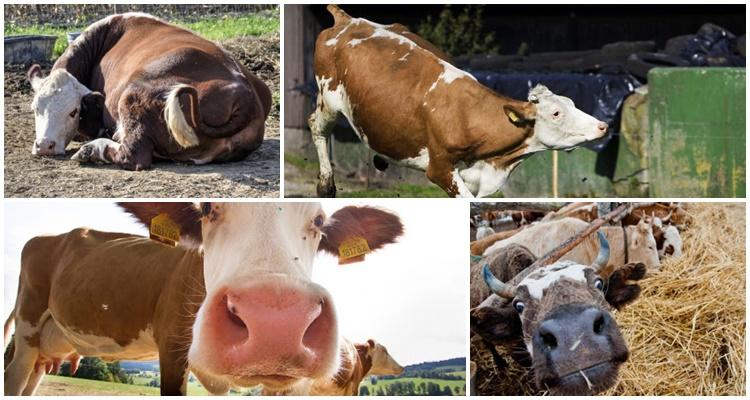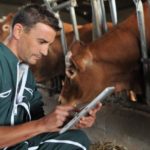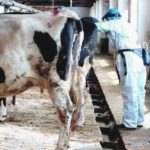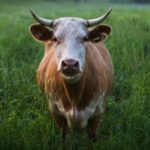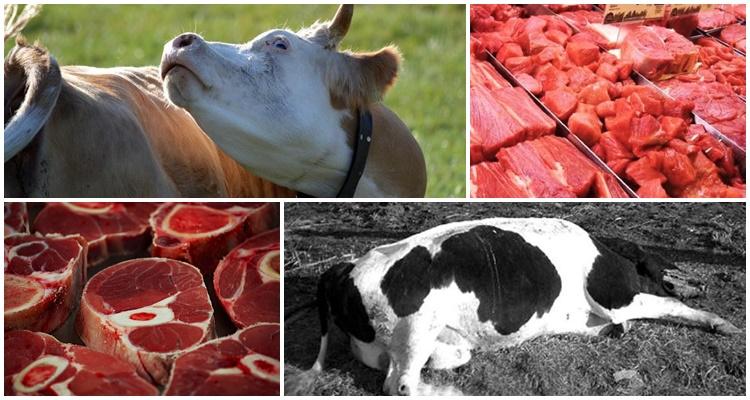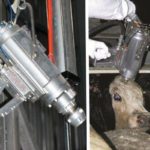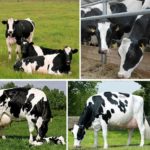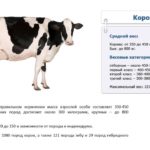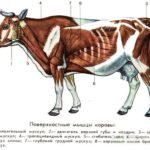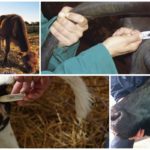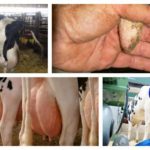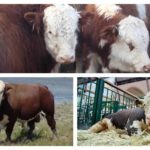Rabies is a deadly viral disease that occurs in wild and domestic animals; upon contact with them (bite) and the saliva of a sick animal getting into the wound, the virus is transmitted to humans. The source of the disease is often cats, dogs, foxes, bats and ordinary mice; cows (cattle) become infected with rabies from them. What actions are required when a virus is detected on a farm, how to prevent its appearance, this is what we are talking about today.
Causes of the disease
The disease develops after the Neuroryctes rabid virus enters the animal's body. A cow can be bitten by an infected mouse, sick dog, fox or other wild animal, then the virus enters the wound along with the saliva of the carrier.
Another way of infection is the spread of infection through contaminated feed, for example, hay, which has come into contact with the saliva of a sick animal, or pieces of salt available in the barn. This happens if purchased infected animals enter the farm.
The virus is bullet-shaped; its highest concentration is found in saliva, tears, cerebral cortex, and ammon's horns of sick animals. It is well preserved at low temperatures, when boiled it dies instantly, and can be preserved for years in undisposed carcasses of sick animals. After infection, the virus enters the animal’s spleen, from there it penetrates the central nervous system and affects the brain.
Animal rabies was described by Democrides and Aristotle even before our era. Over the many years of studying rabies, they have not been able to defeat it; the disease remains fatal to animals and humans. The only way to combat it is vaccination. Rabies occurs throughout the world, except Antarctica and island countries (Japan, New Zealand).
Signs and symptoms of rabies
Rabies attacks the central nervous system of animals. Infected cows become lethargic and lethargic, or become overly agitated. Subsequent stages of the development of the disease are characterized by hydrophobia, increased salivation, and self-gnawing. There are violent and calm forms of cattle rabies.
Violent Form
With this form of rabies, animals are characterized by severe agitation. Cows behave atypically:
- become aggressive, jump around, bang their heads against walls;
- roar loudly and can attack other animals;
- trying to scratch or chew the site of entry of the virus (bite);
- shortness of breath and photophobia occur.
The next stage in the development of rabies in cows causes paralysis of the lower jaw and respiratory organs. Then my legs give out. The animal stops swallowing and moving. Complete paralysis sets in.
Calm
This course of the disease is more typical for cattle. In the quiet form of rabies, the following symptoms appear:
- animals are lethargic, apathetic;
- cows lose their appetite;
- weight decreases sharply;
- chewing gum is lost;
- Photophobia arises, animals try to hide in a dark corner.
The next phase of the development of rabies is characterized by the development of paralysis of the lower jaw (the mouth opens and the tongue falls out). The cow stops chewing and swallowing food and refuses food and water. Complete paralysis and death of the animal occurs. The incubation period of rabies in cows can last from 2 to 12 months, the acute phase of the disease is 5-7 days.
Diagnostics
If the animal's behavior seems strange, you should separate it from the rest of the livestock and call a veterinarian. If the veterinarian detects signs of disease, the animal's head is sent for analysis. It is carefully packed in 5-6 layers of polyethylene and immediately taken for diagnostics. A cow's brain is being examined in a laboratory.
The result is immediately reported to the head of the district and the chief sanitary doctor. If the diagnosis is confirmed, the farm and the area where it is located are immediately quarantined.Animals that do not have obvious signs but may be sick must be isolated. They are examined by a veterinarian 3 times a day. Healthy livestock are examined by a veterinarian every 3 days to identify new cases of disease.
The barn is treated with a solution of formaldehyde or caustic soda. The manure is carefully removed, the bedding is burned, the feed from the feeders, the salt and chalk present in the barn are destroyed. Feeders and drinking bowls are disinfected. Other animals on the farm (cats, dogs) are examined and vaccinated.
Farm workers' belongings (gowns, gloves) that may have been contaminated with saliva from sick animals are disposed of. If the possibility of infection is suspected, vaccinations are required for farm employees.
Important: saliva from an infected animal can enter the human body through wounds, scratches and cuts on the hands. Quarantine is lifted 60 days after the last case of the disease is detected.
Is it possible to cure and what to do with corpses
Rabies causes 100% mortality in animals. Treatment is not carried out due to ineffectiveness, sick cows are destroyed, milk is completely utilized, cow corpses are burned, processed into meat and bone meal, and disposal in cattle burial grounds is allowed. Healthy animals (all available livestock, cats, dogs, other animals) are revaccinated.
Is it possible to eat the meat of sick animals?
When a diagnosis of rabies is made, the area in which the disease was detected is quarantined. Animals are not imported or exported from the area. Milk, meat, and skins of sick animals are completely burned. You cannot eat meat or drink milk, even after heat treatment.
The meat of vaccinated animals that are suspected of having rabies, but the diagnosis is not confirmed, can be eaten; the animal is examined by a veterinarian before slaughter and issues a certificate about the condition of the animal.
Vaccination scheme
First Rabies vaccination is given to calves 6 months of age, then the vaccination is repeated every 2 years. In case of a difficult epidemiological situation in the area, calves from 3 months of age are vaccinated. The vaccination is done during the dry period, when cows do not give milk. Do not vaccinate weakened or sick animals. The vaccine is not administered to calving cows.
The vial with the vaccine is shaken to mix; after opening it, the vaccine is completely used. The cow is injected intramuscularly with 1 milliliter of the drug. The vaccine should not be frozen. If the seal of the bottle is accidentally broken, pour boiling water over it and boil for 7-10 minutes to completely destroy the virus. The vaccination is done with sterile disposable syringes, the vaccination site is disinfected with alcohol. Vaccination is carried out by veterinarians. Vaccination documents are kept by the farmer and the district sanitary doctor.
Other preventive measures
In order to prevent the spread of rabies among the cattle population, it is necessary to monitor the disease status in the area where the farm is located. Destroy breeding wild animals. Protect the herd from attacks by wild animals, fence off walking areas. Vaccinate domestic animals (dogs, cats) against rabies. Vaccinate a healthy population of cattle and calves. Timely vaccination of animals and preventive measures taken on the farm make it possible to avoid mass infection of animals and save livestock.

